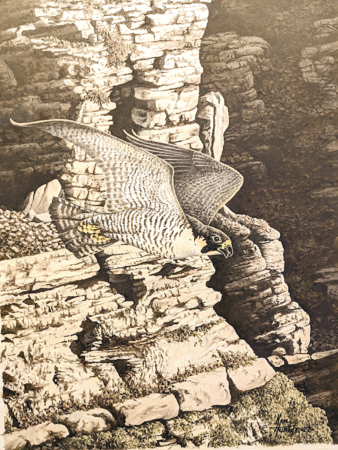Like most folks out here in rural Pennsylvania, I enjoy seeing a wide variety of birds, and like many of us, I really get a kick out of spotting some of the “big guys” like hawks, ospreys, and especially eagles. Some hawks, like red-tailed hawks, are often seen perched in trees along major highways, where they wait to pick off some unsuspecting prey.
If you want to get a look at an osprey, you might want to center your search near a lake, stream, or along the Susquehanna River since fish is their main prey.
Lakes, rivers, and streams are also great places to look for eagles, but I now frequently spot them in many other types of locations depending on where nesting sites are located.
Last week my wife and I spent a few hours fishing on a fairly local lake, and during that time, we were constantly visited by two mature eagles and two immature eagles. One of the eagles perched only 30 yards away on a dead tree and watched us fish for some time, probably hoping to nab a meal of his own.
One large bird that I haven’t seen much of, if at all, however, is the one in the title of this piece — the peregrine falcon. One good reason for not seeing them is that until more recent times, they were pretty much non-existent.
According to the U.S. Fish and Wildlife Service, North America went from nearly 4,000 breeding pairs in the 1940s to 324 in 1975, and they disappeared from the eastern United States by 1960. One of the big reasons for their disappearance was much the same as the eagle decline — DDT softening the eggs and destroying nesting sites.
Today, however, thanks to the efforts of the Pennsylvania Game Commission and the non-profit Peregrine Fund, peregrines have been “farmed” and then released at various locations across the state. Because of these efforts, peregrines have been removed from the threatened or endangered listing here in Pennsylvania. These new efforts are obviously paying off since in 2011, there were 32 nesting pairs, and in 2021, 73 nesting pairs were reported.
I began to focus more attention on peregrine falcons this past year mainly because I had to; let me explain. The Pennsylvania Game Commission contacted me and asked me to produce the June cover of Pennsylvania Game News magazine, something I’ve been doing as a wildlife artist for quite a few years. My research showed that peregrines preferred nesting at cliff sites, some of which were located along rivers like the Susquehanna and its tributaries. I immediately homed in on the steep rock cliff at the small park located in Picture Rocks — that became my background for the soaring peregrine.
Of course, as I tried to learn more about these interesting birds, I came across some other interesting facts. Peregrine falcons have pointed wingtips making them very fast and agile while in flight. Peregrines mainly feed on other birds, and they can dive at speeds of up to 200 mph. Since the replanting of peregrines began in Pennsylvania, new sites have been sought out; now, not only are cliff sites being utilized but tall buildings and bridges have been producing, including structures in the cities of Philadelphia, Pittsburgh, and even Williamsport. What birds do peregrines feed on in the city locations? Answer — starlings and pigeons.
Keep an eye out for the peregrine in the right places; remember that it could be a cliff, a tall building, or a bridge. Look for the grayish bird on the back and topside of wings with a black hood that extends down over the eyes. While they are no longer on the endangered list, they are still protected; the fine for harming a peregrine falcon is $2,500.




